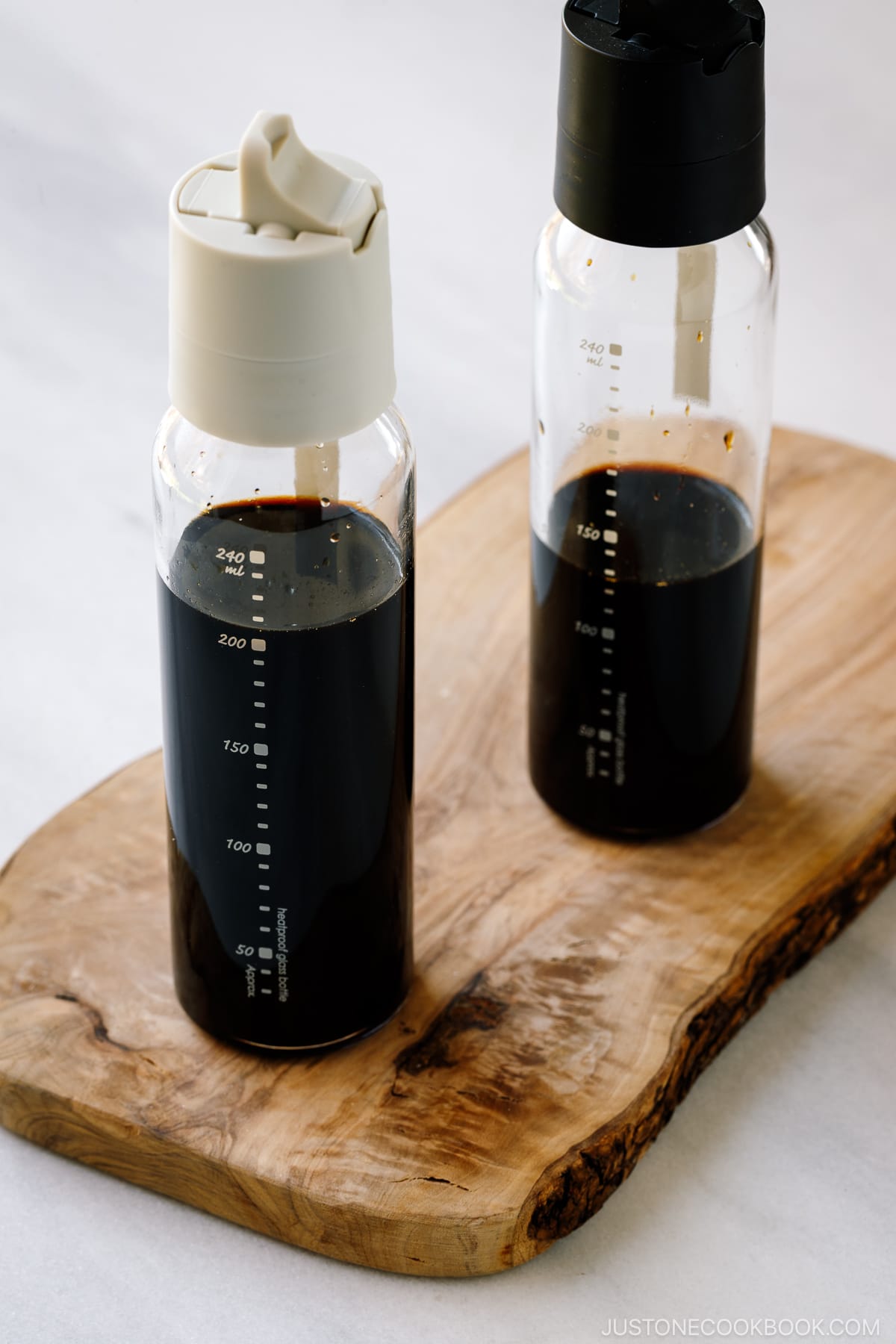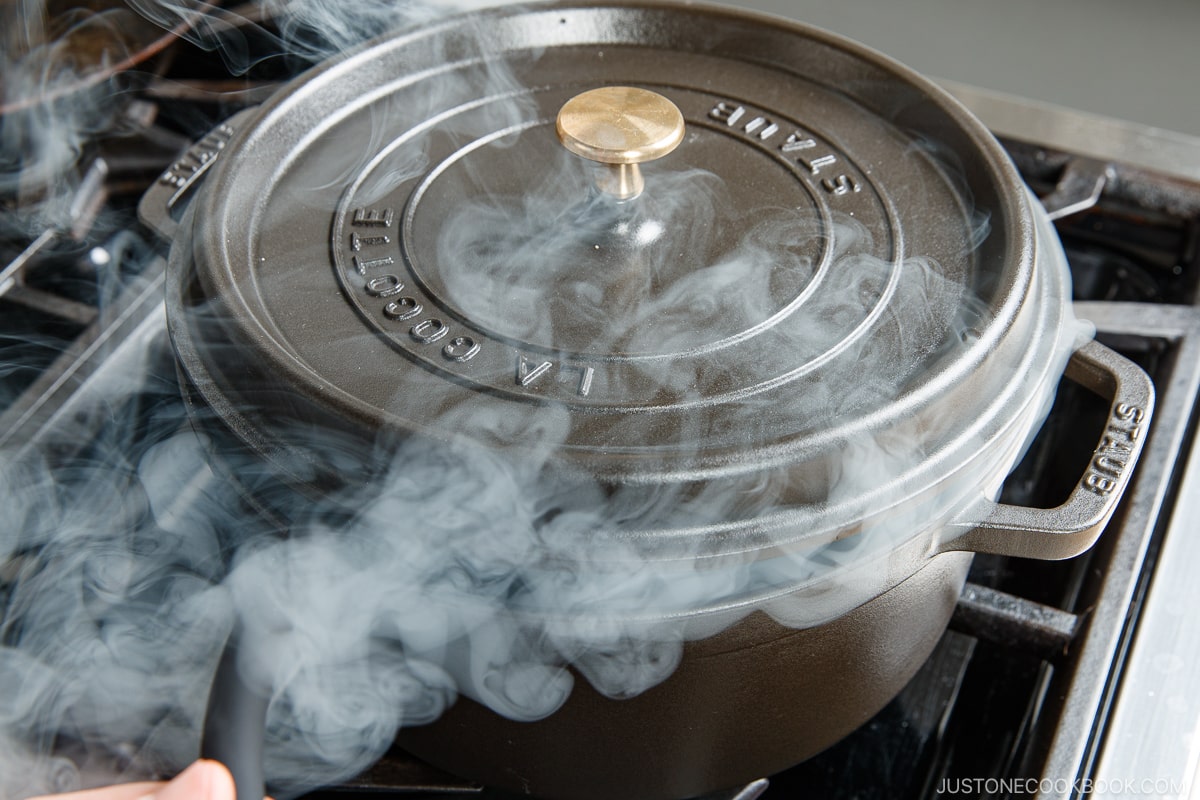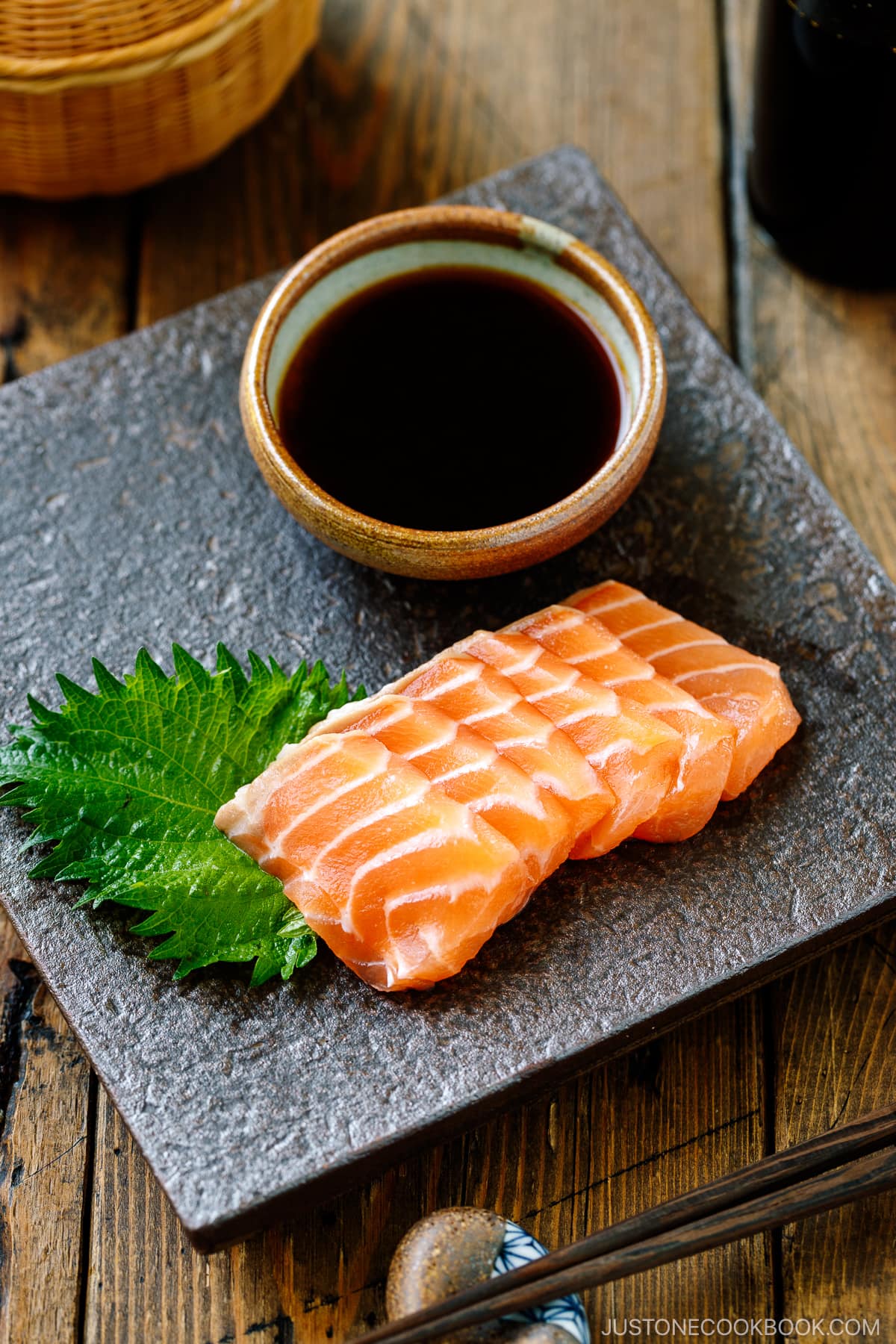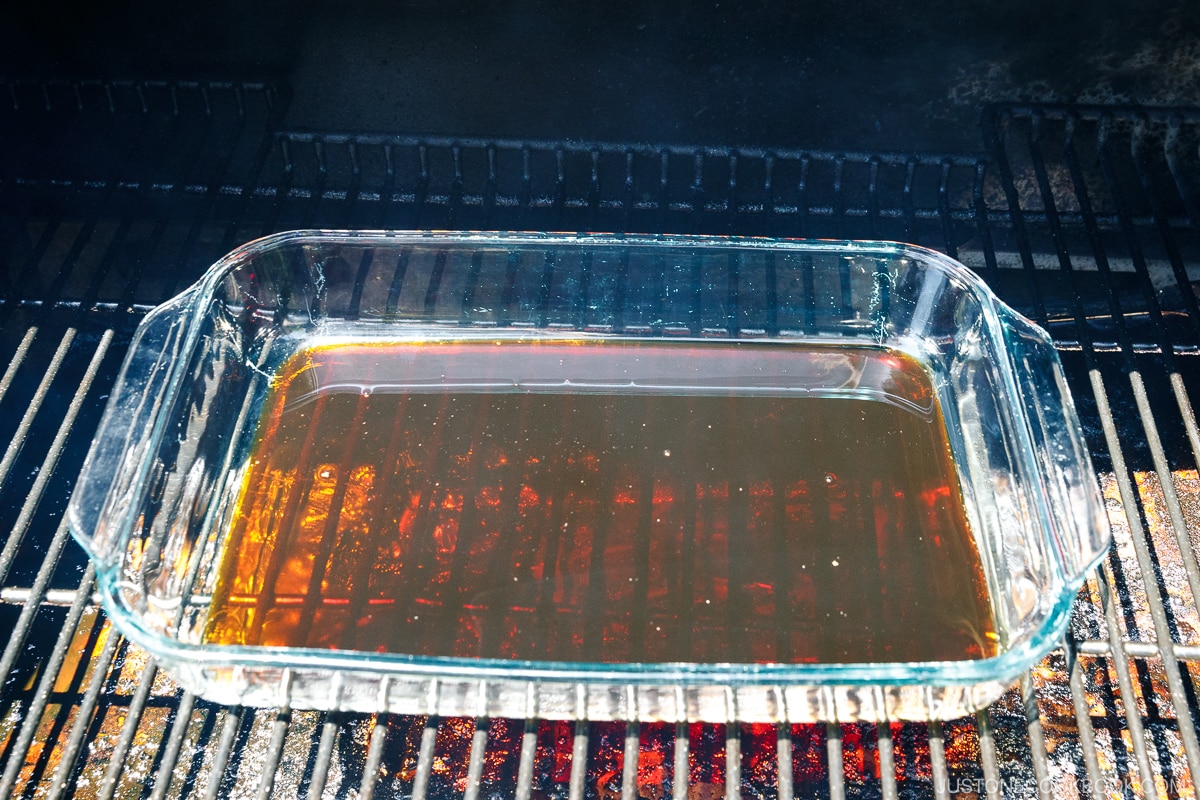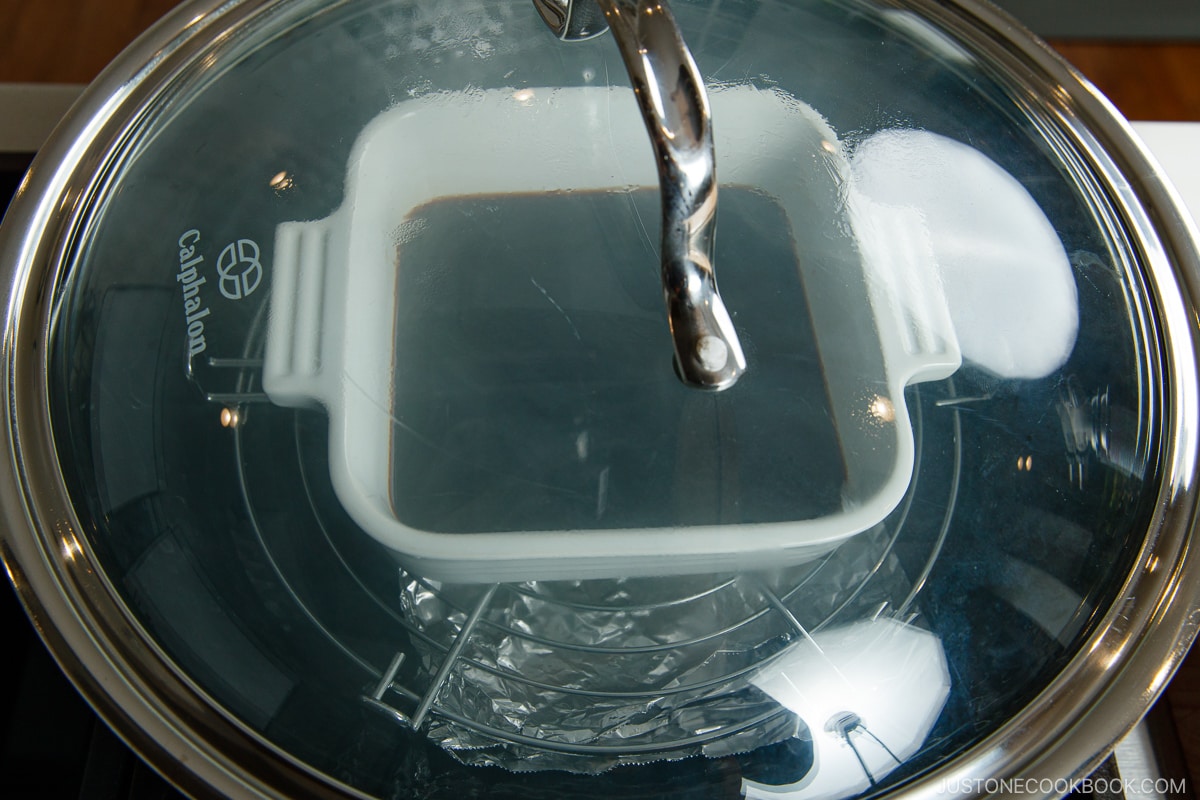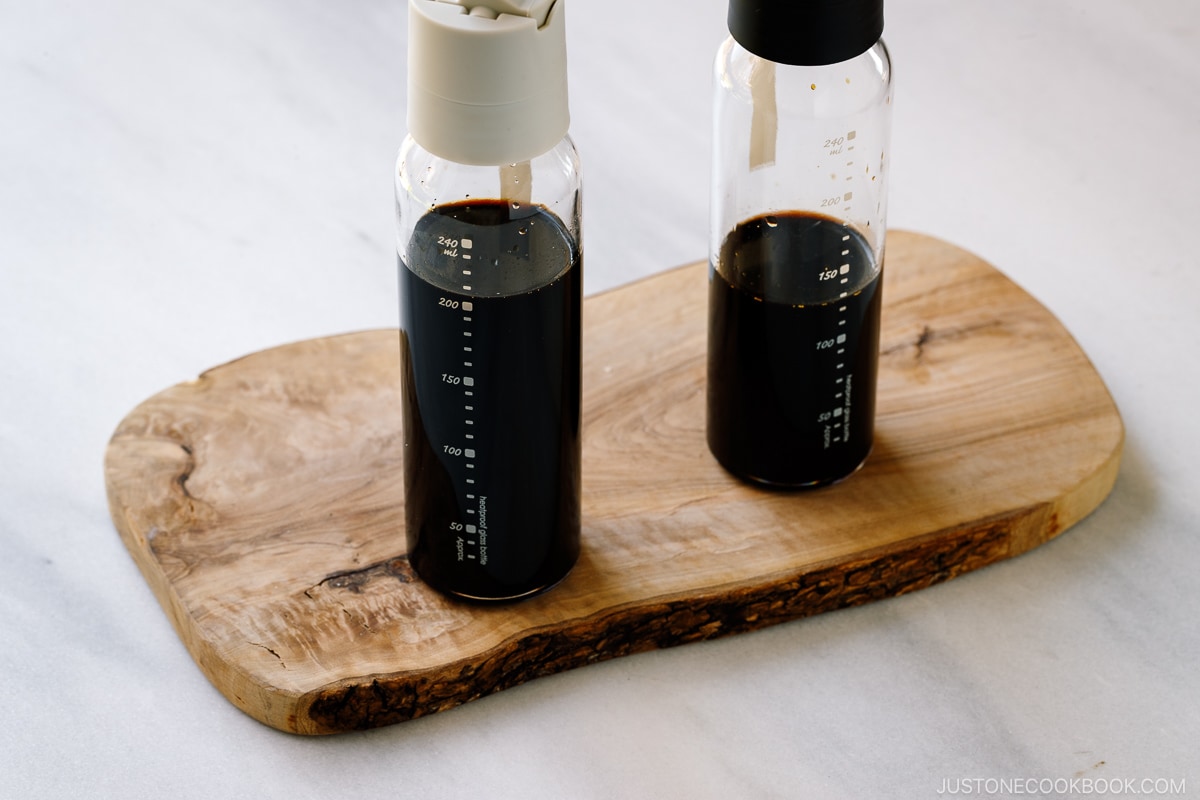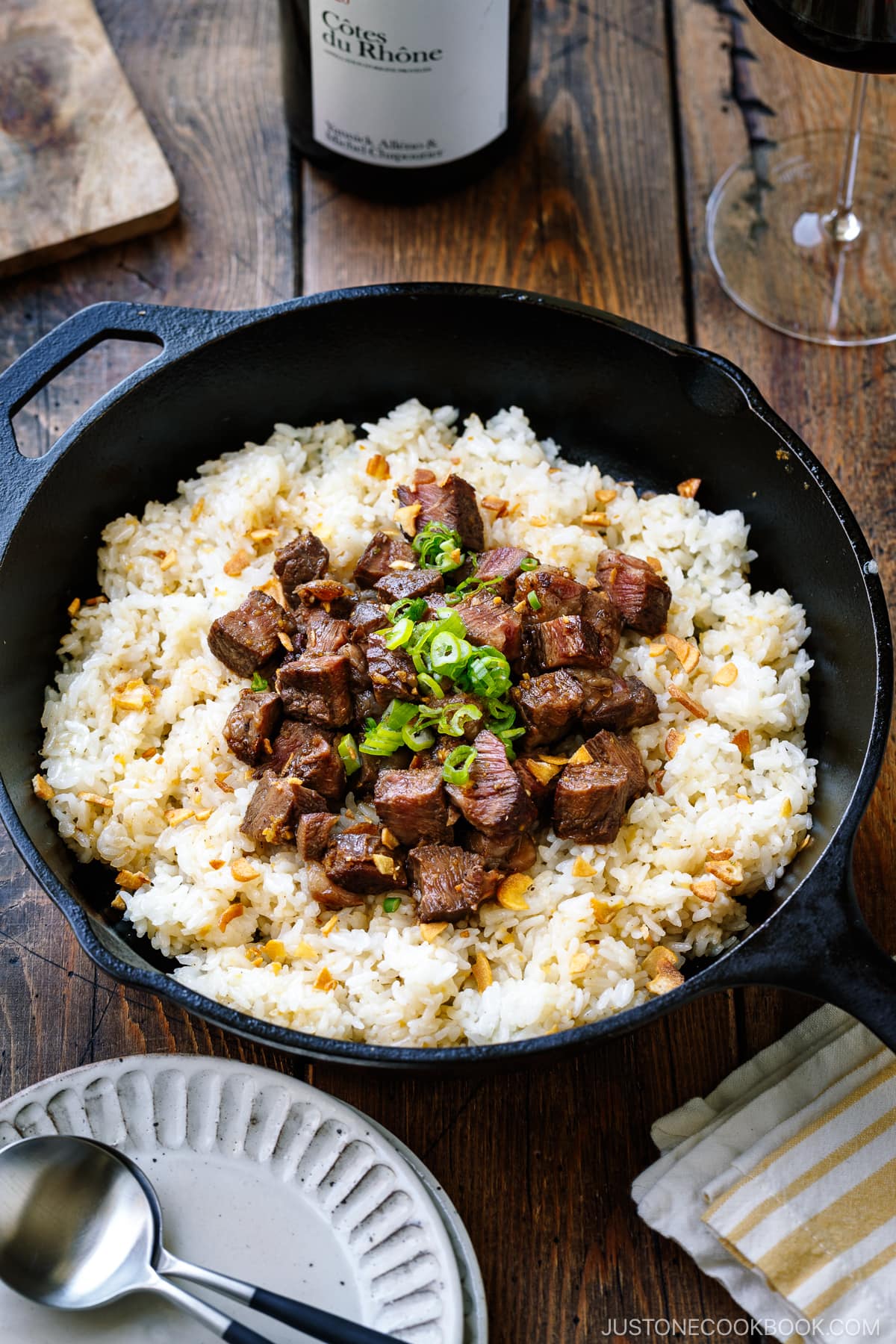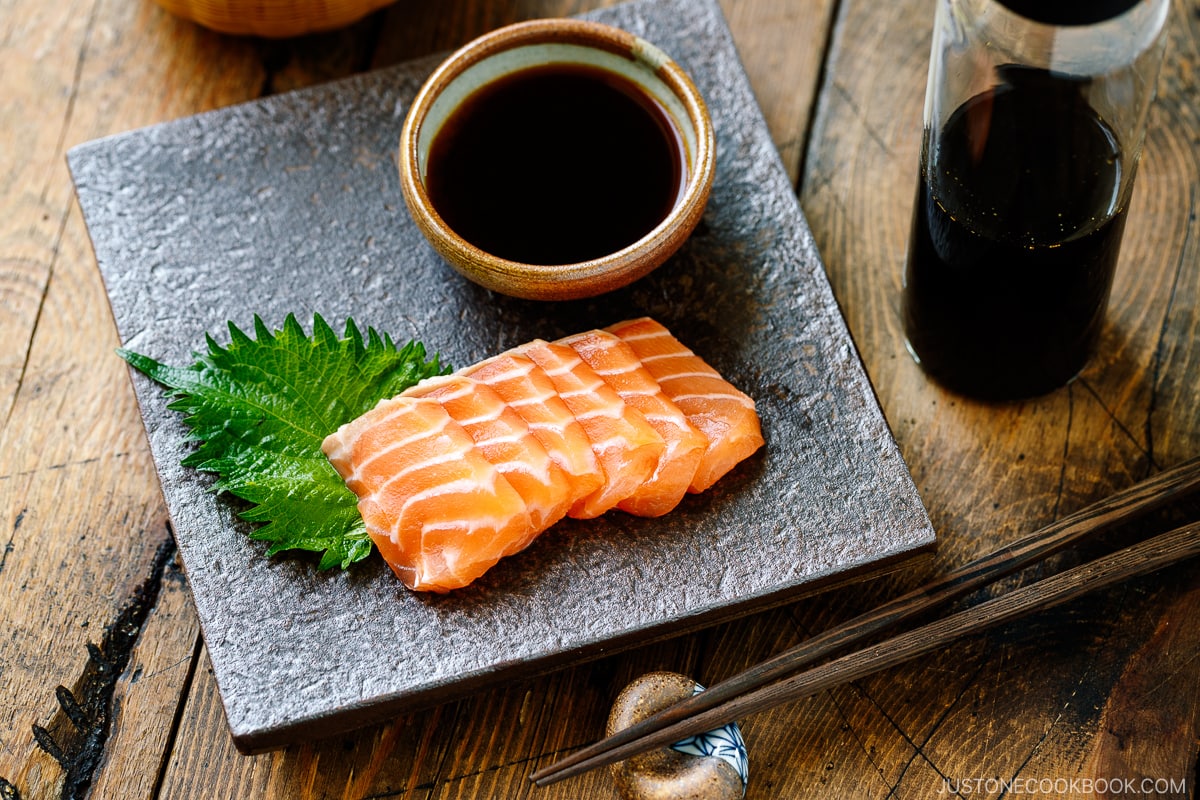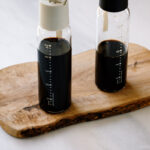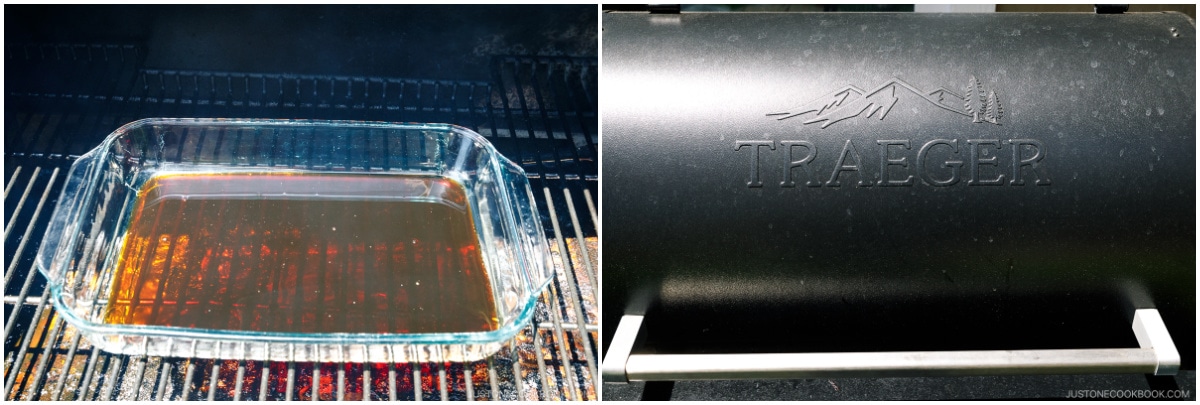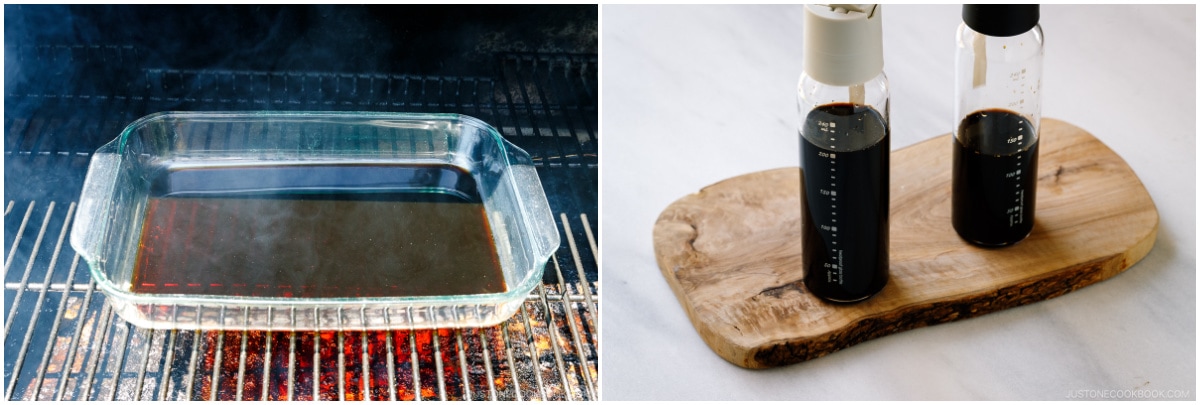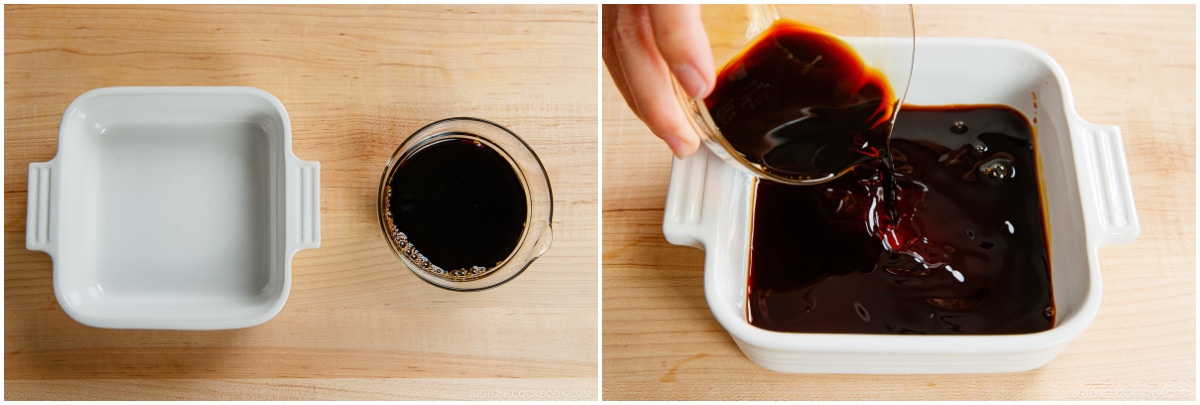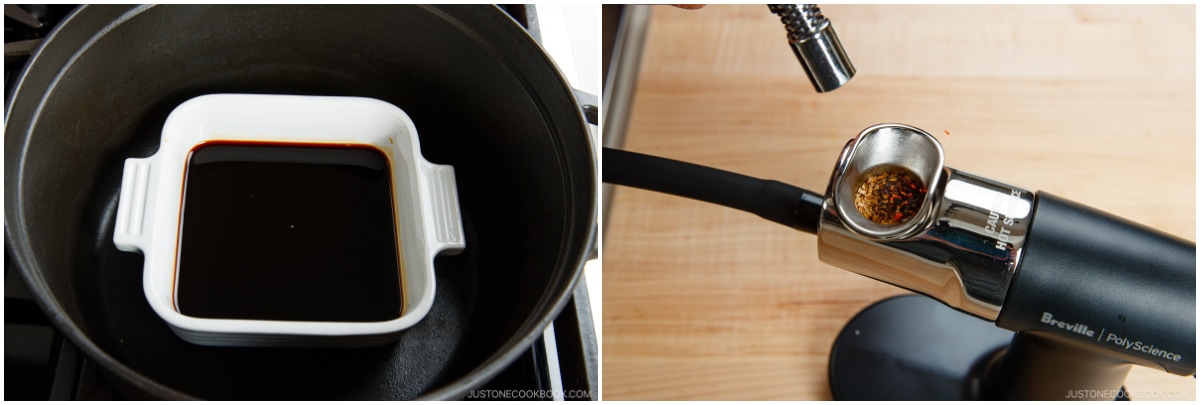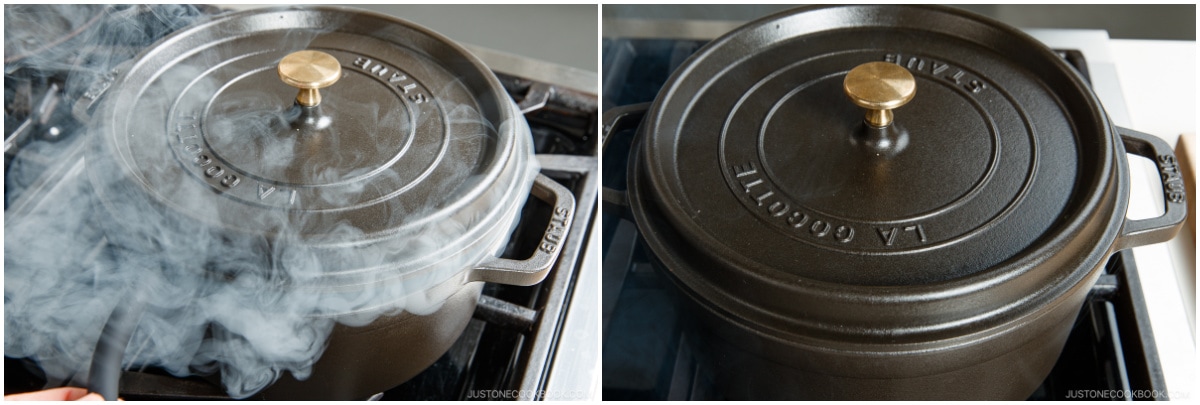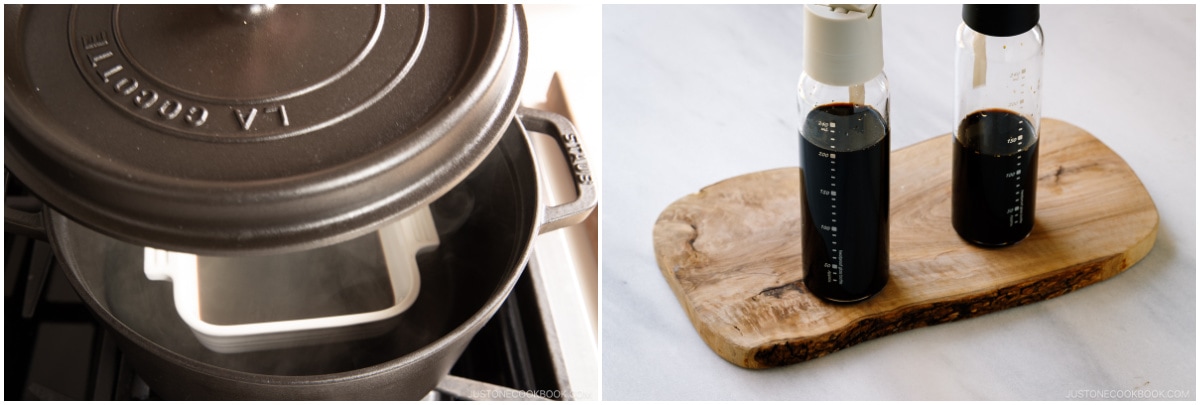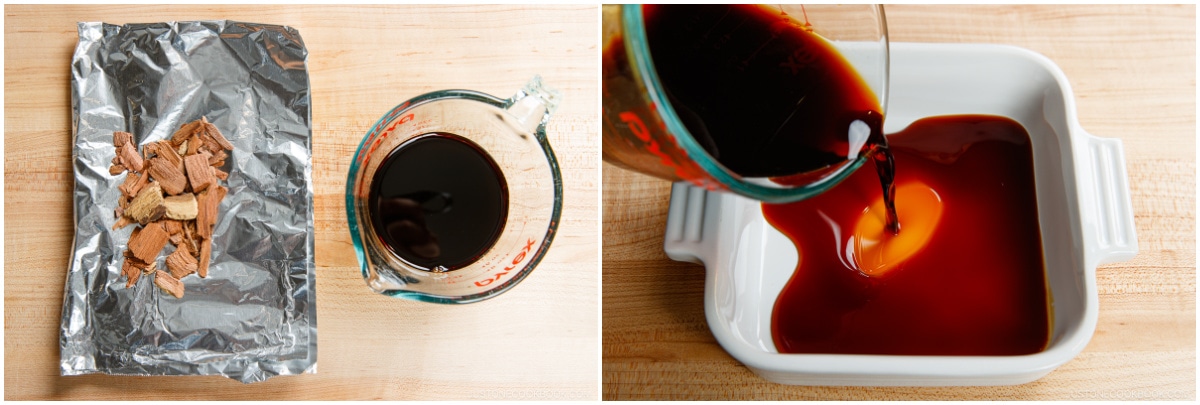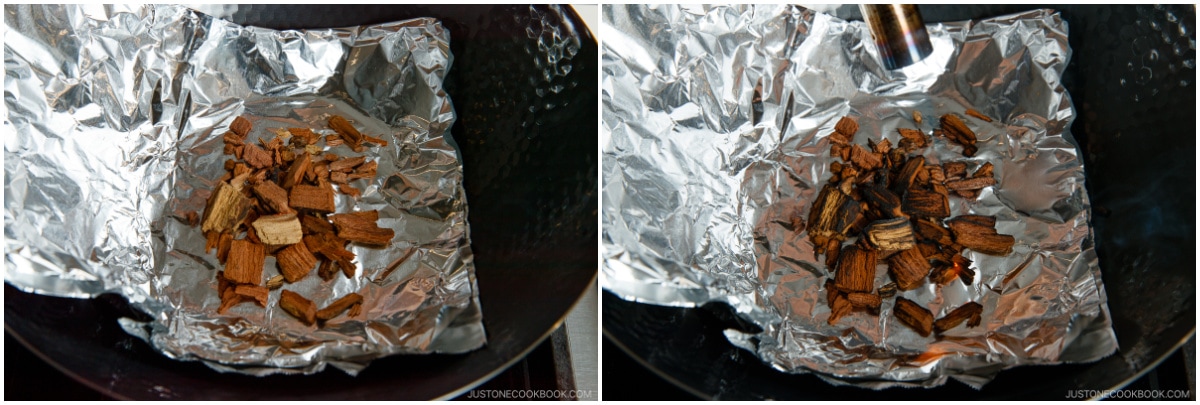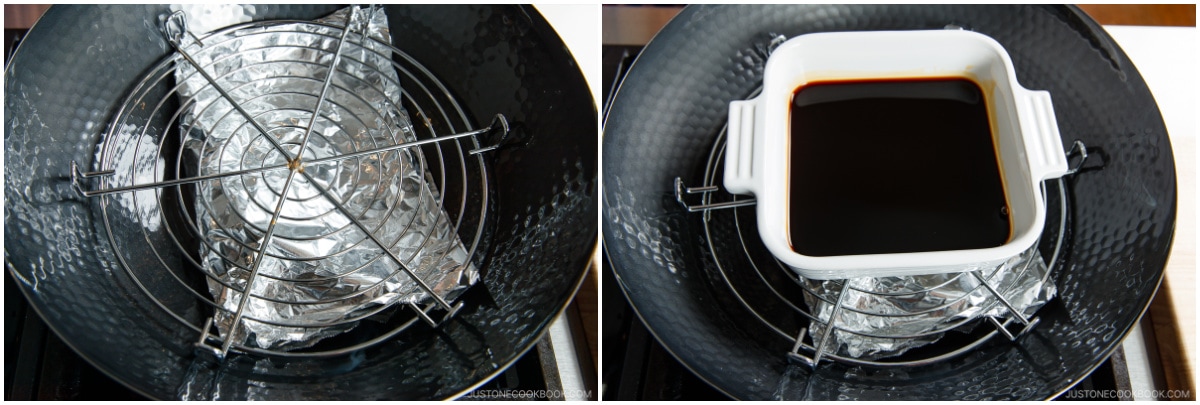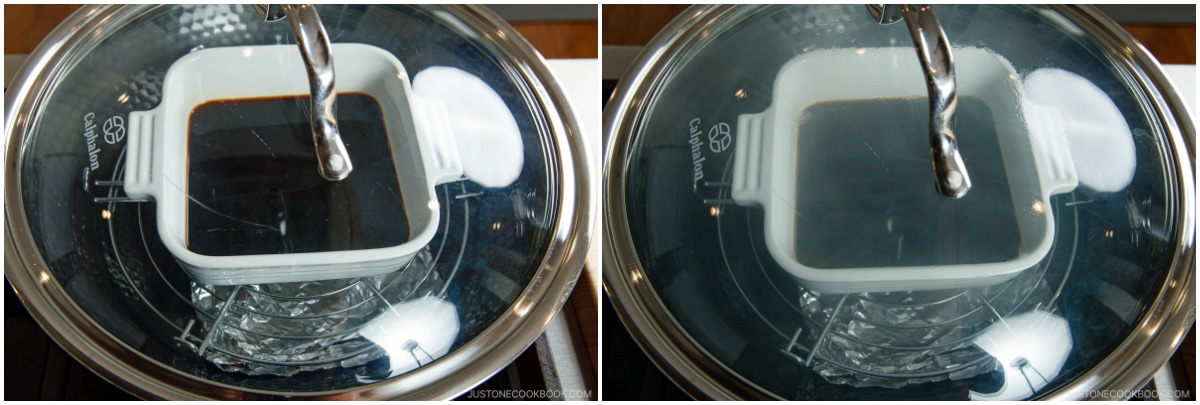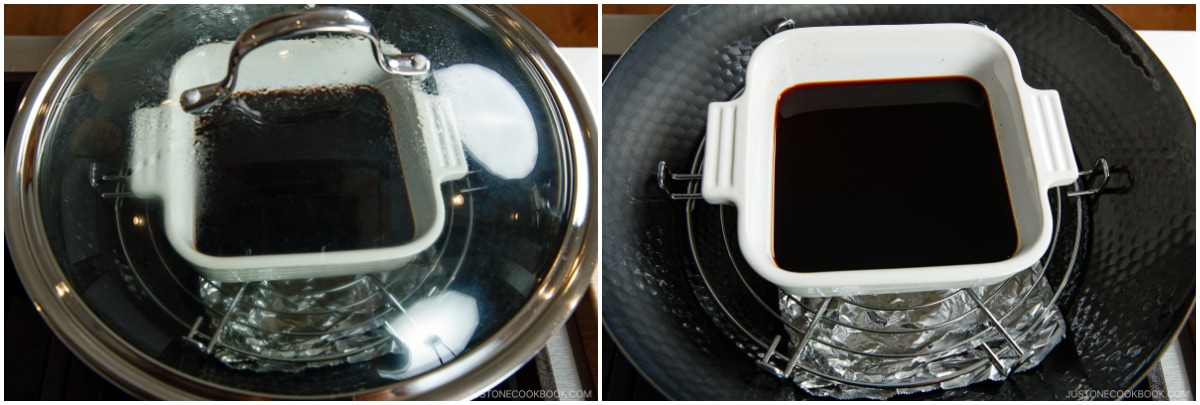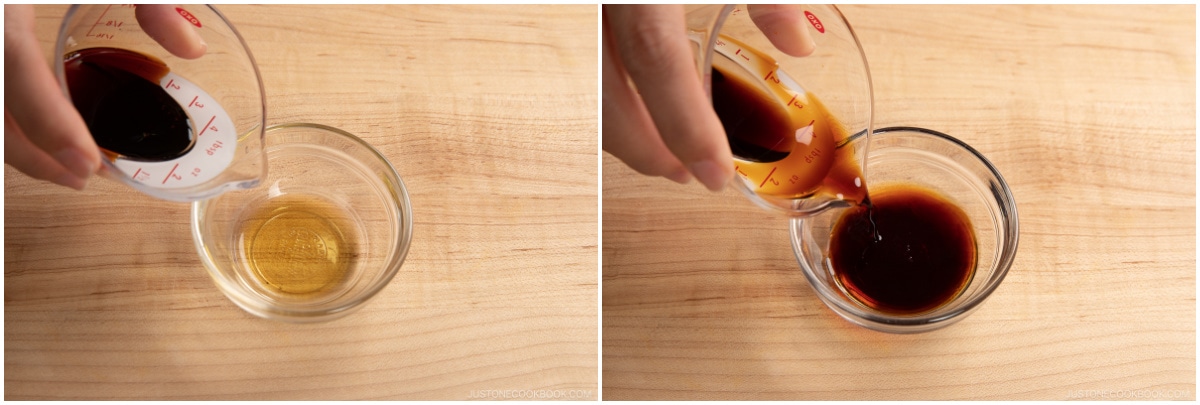We were introduced to smoked soy sauce many years ago and although we were instantly wowed by the flavor, it can be hard to justify spending $20 on a bottle. It was until recently when we had the opportunity to collaborate with Kemuri Baru on making the chef’s signature steak garlic rice, we were inspired to attempt smoked soy sauce at home. Why bother smoking soy sauce? For the simplest reason, it makes everything taste better! Soy sauce itself is amazing, so you can imagine its heightened awesomeness when it’s infused with smoke. The extra dimension of taste elevates various dishes like sashimi, meats, and other protein-based delicacies. The same reasons why we smoke meat, fish, or marshmallows: more savory depth and more complexity. Today, I’ll show you 4 different methods on how to make smoked soy sauce at home. You’ll be surprised by the ease of it and the fun of producing your own fancy bottles.
What is Smoked Soy Sauce?
Smoked soy sauce is pretty straightforward as it’s basically injecting smoke flavor into soy sauce. Smoke adds a dimension of flavor all its own, something rich and tantalizing to the all-mighty soy sauce. We would use it like regular soy sauce on dishes that are paired with savory applications.
Why You’ll Love This Smoked Soy Sauce Recipe
4 Ways to Make Smoked Soy Sauce
The Ingredients You’ll Need
Japanese soy sauce – You’ll need regular Japanese soy sauce. Take note that it is not the same as Chinese, Korean, or Thai soy sauce. Smoking ingredients: Wood chips (I used hickory) or liquid smoke
We included four methods below. Each method yields distinct levels of smokiness, so don’t hesitate to explore and find the one that suits your preferences.
Method 1: Use a Smoker
Use a pellet smoker that can hold its temperature steadily, and smoke the soy sauce at a low temp for 2 hours.
Method 2: Use a Smoking Gun
Have a smoking gun you use for cocktails? Use it to smoke soy sauce by sealing the cold smoke in a tightly sealed pot.
Method 4: Use a Wok
Economical method and doesn’t require any fancy equipment. Heat up wood chips inside aluminum foil and place inside a wok, continue to heat until smoke comes out and infuse the soy sauce.
Method 4: Use Liquid Smoke
The easiest method is simply to mix liquid smoke and soy sauce. You are only limited by the variety of liquid smoke available.
Recipe Tips and Techniques
Different methods result in different intensities. Surprisingly, smoking the soy sauce in the Traeger pellet smoker for 2 hours had the lowest smoke intensity. The strongest intensity is by using liquid smoke. There are no wrong or right methods. Try different smoke intensities depending on how delicate the dish is. For a white fish sashimi, we would recommend just a hint of smokiness whereas for Asian pulled pork, the intense smoke flavor makes it taste like cooked over a wood fire. It’s really important to use a tight-fitting pot when infusing smoke, otherwise the smoke flavor does not penetrate soy sauce as well. Try different types of wood for different food, such as apple, cherry, hickory, mesquite, and oak. If you do the wok method, don’t over-burnt the wood chips as it can introduce a bitter taste to the soy sauce.
Storage Tips
Keep smoked soy sauce in an airtight bottle (I love this Hario dressing bottle) or mason jar. Refrigerate it for up to a month.
How to Use Smoked Soy Sauce
This is your soy sauce whenever you want your smoky flavor on!
Rice – Steak Garlic Rice Stew – Instant Pot Short Ribs Salads – Smoked shoyu with extra virgin olive oil and honey makes a simple yet delish dressing for your salads. All sorts of vegetables, mushrooms, or tofu when you crave the extra smoky taste. Meats, seafood, and sashimi – Instant Pot Asian Pulled Pork, Saikoro Steak Desserts – Soy Sauce Caramel Ice Cream or on fruits such as mango, kiwi, and pineapple.
Can I smoke more than you specified?
Yes, test at our recommended time and if you desire a more intense smoke flavor, continue for another 10-20 minutes. Make sure to refill the pot or pan with more smoke for the extra duration.
What kind of wood chips do you recommend?
We like cherry and hickory as they work with many kinds of protein and don’t overpower the food.
Recommended Tools to Make This Recipe
Wish to learn more about Japanese cooking? Sign up for our free newsletter to receive cooking tips & recipe updates! And stay in touch with me on Facebook, Pinterest, YouTube, and Instagram.
